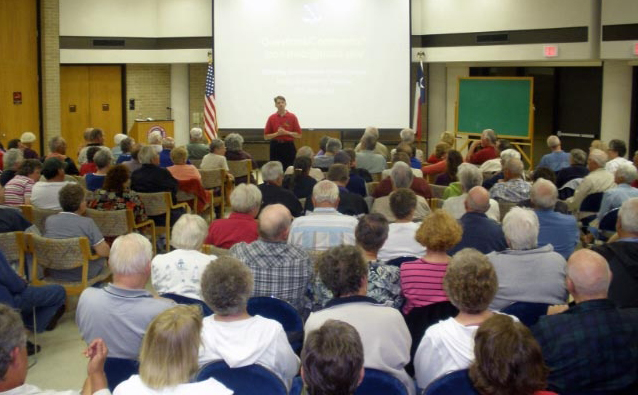
You can view several lectures held virtually in 2021 at our YouTube Channel.
2021
Alicia Walker - Sea Turtle Stranding and Rehabilitation
Derek Bolser - Fantastic fish and where to find them
Simon Brandl - Understanding and conserving coral reefs
Kristin Nielsen - Mercury Exposure From Subsistence Fishing
Jace Tunnell - Saving 1,000 Cold Stunned Sea Turtles
Victoria Congdon - Seagrass in the Gulf of Mexico
Brett Baker & Andrew Esbaugh - Diversity in a Changing Ocean
2020 |
||
|
February 6, 2020 Sharks in the Gulf of Mexico: Real Time Tracking of Marine Apex Predators Dr. Kesley Gibson, Harte Research Institute, Texas A&M University Corpus Christi |
||
|
February 13, 2020 The Good, the Bad & the Algae: Ciguatera fish poisoning |
||
|
February 20, 2020 The Road Less Traveled: Birding in Northern Peru
|
||
|
February 27, 2020 Climate Change: How it’s Affecting Research in the Arctic and Gulf of Mexico |
||
| The 2020 seminar series is made possible with support from The University of Texas Marine Science Institute and Mission-Aransas Reserve. | ||
2019 |
||
|
Thursday, January 31, 2019 at 7:00 p.m. at Pioneer Beach Resort, 120 Gulfwind Dr., Hwy 361, Port Aransas
|
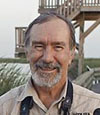 |
|
|
Thursday, February 7, 2019 at 7:00 p.m. at Pioneer Beach Resort, 120 Gulfwind Dr., Hwy 361, Port Aransas
|
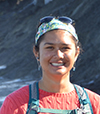 |
|
|
Wednesday, February 13, 2019 at 7:00 p.m. at Pioneer Beach Resort, 120 Gulfwind Dr., Hwy 361, Port Aransas Dr.s Ed Buskey, Zhanfei Liu, Andrew Esbaugh
|
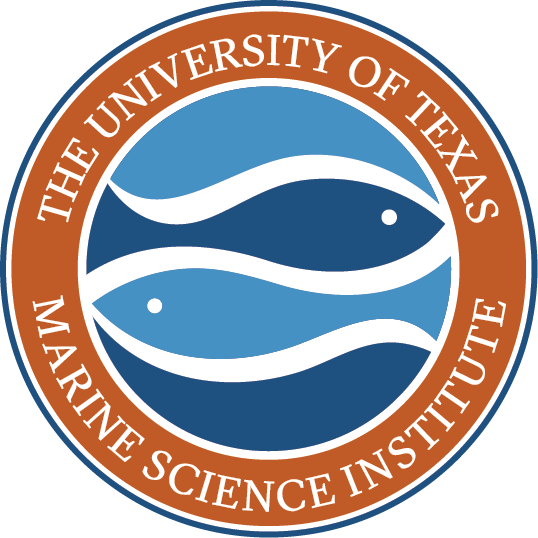 |
|
|
Thursday, February 21, 2019 at 7:00 p.m. at the Community Center, 408 N. Alister, Port Aransas
|
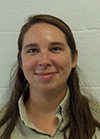 |
|
|
Thursday, February 28, 2019 at 7:00 p.m. at Pioneer Beach Resort, 120 Gulfwind Dr., Hwy 361, Port Aransas
|
 |
|
| The 2019 seminar series is made possible with support from The University of Texas Marine Science Institute, Mission-Aransas Reserve, and the Laura Randall Schweppe Endowed Lecture Series in Marine Science. We would also like to thank the Pioneer Beach Resort, Palmilla Beach Resort & Golf Club, and The City of Port Aransas for venue and parking support. | ||
2018 |
||
|
February 1, 2018 at 7:00 p.m. at Pioneer Beach Resort, 120 Gulfwind Dr., Hwy 361, Port Aransas |
 |
|
|
February 8, 2018 at 7:00 p.m. at Pioneer Beach Resort, 120 Gulfwind Dr., Hwy 361, Port Aransas
|
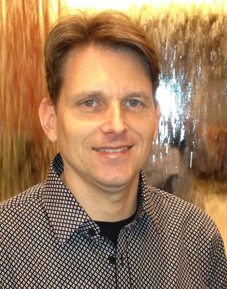 |
|
|
February 15, 2018 at 7:00 p.m. at Pioneer Beach Resort, 120 Gulfwind Dr., Hwy 361, Port Aransas
|
 |
|
|
February 22, 2018 at 7:00 p.m. at the Community Center, 408 N. Alister, Port Aransas
|
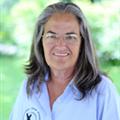 |
|
2017 |
||
|
Thursday, January 19, 2017 at 7:00 p.m. -
|
 |
|
|
Thursday, January 26, 2017 at 7:00 p.m. |
||
|
John Metz, Warning Coordination Meteorologist, National Weather Service Explore the history of hurricanes in Texas, the hazards associated with the storms and forecast tools available for citizens to stay informed during a land falling storm.
|
 |
|
|
Lara Keys, Meteorologist, National Weather Service Weather plays a critical role in the development and behavior of wildfires. The National Weather Service works in conjunction with federal and state wildland managers to protect life and property during wildfires. You can learn what weather factors play a role in wildfires to help prevent and prepare for one.
|
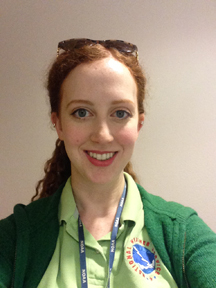 |
|
|
Dr. Feiqin Xie, Atmospheric, Physical & Env. Sciences, Texas A&M University Numerical weather prediction has improved significantly in the past four decades. One of the key factors is the advance of satellites technology since 1970s. Global satellite measurements improves the current state of the weather, and the understanding of the physics of the atmosphere and oceans. In this talk, several key satellite missions will be introduced, and their impact on the weather prediction will be explored. |
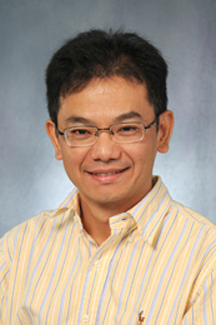 |
|
|
Dale Nelson, Meteorologist, KRIS TV The snow that fell on December 24th and ended on December 25th in 2004 and was not only the most snowfall ever in recorded history of the Coastal Bend but it was also the most snow recorded during that time anywhere in the lower forty-eight United States. It is being called the Christmas weather miracle and believed to be the single most important weather event in recorded history of the city of Corpus Christi and the area. |
 |
|
|
Thursday, February 2, 2017 at 7:00 p.m. Steroid hormones cause rapid changes in target cells through activating membrane receptors, but until recently the identities of these receptors were unknown. Fish are excellent models for examining hormone actions because the results can often be translated to humans and impact biomedical research. For example, we took advantage of the huge numbers of eggs in fish ovaries to purify and identify the steroid membrane receptors on fish and mammalian eggs. We found novel receptors in fish for estrogens, testosterone and progesterone that in their human counterparts regulate a wide variety of important functions in health and disease. |
 |
|
|
Thursday, February 9, 2017 at 7:00 p.m. Antarctica’s Weddell seals routinely hold their breath for 20 minutes and can swim to depths of 2,000 feet or more in search of fish to eat. Their dives under the ice can take them a half mile or more away from their breathing hole. Yet, they always find their way back to the hole, even in darkness. How can they possibly do this? Dr. Lee Fuiman and a team of researchers from three other universities proposed that Weddell seals might be able to detect Earth’s magnetic field and use it to navigate underwater. Over three years, the team conducted carefully designed experiments to test this hypothesis. In his presentation, Dr. Fuiman will explain those experiments and show how the team went about it in the often harsh conditions of the world’s coldest continent. |
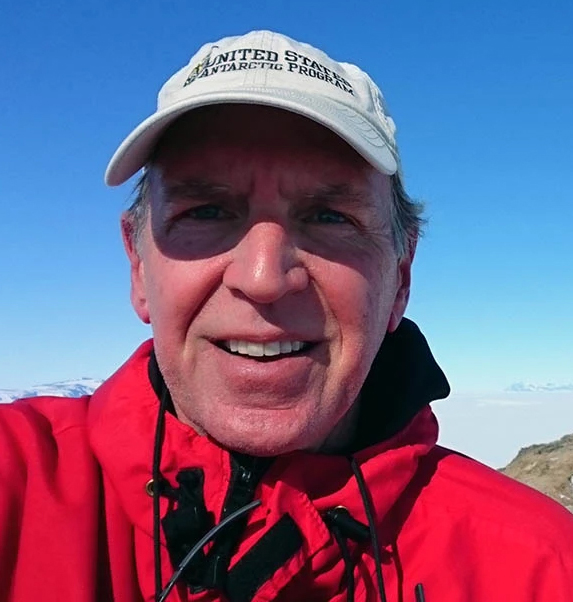 |
|
|
Thursday, February 23, 2017 at 7:00 p.m. Cranes are among the most spectacular, elusive, and beautiful birds on earth, with a heritage that goes back to prehistoric times. Their resounding voices are trumpets from the past, and over the centuries, cranes have been symbols that speak to the human heart. They figure prominently in the artwork, dances, poetry and folk tales of many cultures. Cranes are universal symbols of longevity, monogamy and good luck due to their long life spans and mate fidelity. They are also messengers alerting us to the health of the landscapes and natural resources that benefit all life on Earth. Through the charisma of cranes, the International Crane Foundation brings people together around the world to find new pathways to sustain water, land, and livelihoods. |
 |
|
|
Thursday, March 2, 2017 at 7:00 p.m. Meg Streich is a Biological Science Technician with the Padre Island National Seashore's Division of Sea Turtle Science and Recovery. Led by Dr. Donna Shaver, the Division focuses on the research and recovery of the five threatened or endangered sea turtle species found in the Gulf of Mexico--the Kemp's ridley, green, loggerhead, hawksbill, and leatherback sea turtles. Meg will discuss efforts on-going in our local area to study and conserve sea turtles. Her presentation will focus on the long-term, bi-national effort to form a secondary nesting colony of endangered Kemp's ridley sea turtles at Padre Island National Seashore as a safeguard against extinction and Kemp's ridley nest detection and protection efforts in Texas. She will also discuss efforts to rescue threatened green sea turtles that have become cold stunned (incapacitated) during periods of very cold temperatures.
|
 |
|
| Thursday, March 9, 2017 at 7:00 p.m. | ||
|
Erin Reed, Graduate Student, Marine Science Climate variability has been documented in scientific literature to have a variety of effects on individual fish and fisheries. Unfortunately the linkages between climate, fish populations and fisheries is poorly understood for most exploited species, which hinders effective management. In many cases the effects known, are considered to be negative on fish growth and inevitably fisheries production. |
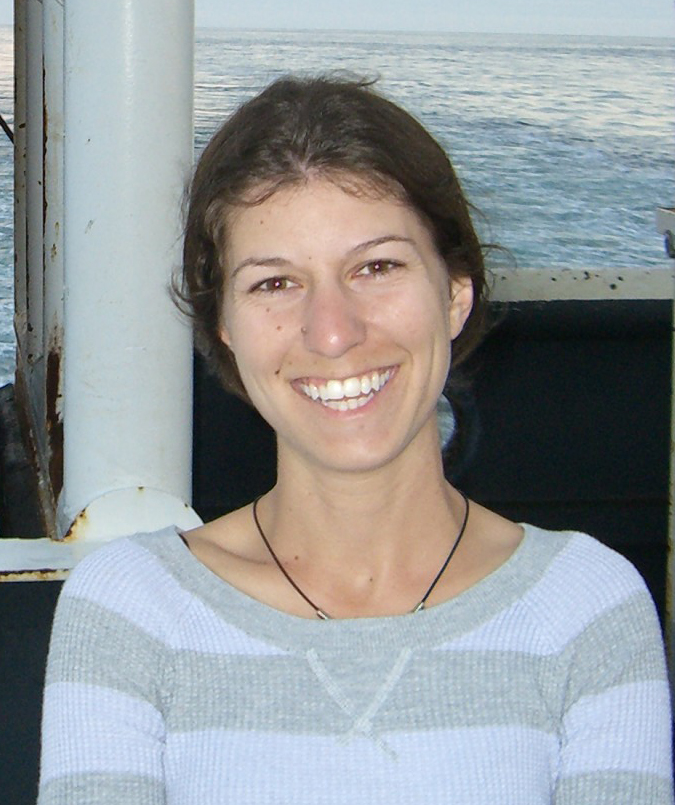 |
|
|
Katie Swanson, Stewardship Coordinator, UTMSI NERR Marine debris is any man-made object that has made it into the marine environment, either intentionally or accidentally. Marine debris of all kinds can be found along the Texas coast. In this presentation, potential sources and impacts of marine debris will be discussed, as well as some results of an on-going NOAA Texas Marine Debris Monitoring Project. |
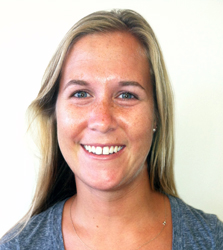 |
|
2016
Thursday, February 18, 2016, 7:00 p.m.
Panel Discussion with Drs. Ed Buskey, Andrew Esbaugh, Lee Fuiman, Zhanfei Liu, Hernando Bacosa, and graduate student, Meredith Evans, UTMSI
“Dispatches from the Gulf: Research Updates from the Deepwater Horizon Oil Spill“
UTMSI will feature one of the first public showings of excerpts from the new Science documentary “Dispatches from the Gulf”, part of the PBS series Journey to Planet Earth, which tells the story of some of the research carried out to study Deepwater Horizon oil spill, and the effects on the Gulf of Mexico ecosystem. Scientists from UTMSI involved with studies of the spill will form a panel to comment and answer questions on the topics covered in the film. “Dispatches from the Gulf” examines the impact of the 2010 Deepwater Horizon oil spill upon the Gulf of Mexico and its environmental impact on humans, wildlife, and the ecosystem. The film touches upon the serious effects the spill had on local communities, including the tourism industry, and especially the families who relied upon seafood such as shrimp and crabs for their livelihoods. The opportunities for scientific research that came from this spill (the largest in U.S. history) are, however, the focal point of “Dispatches.” Take an up-close tour on research ships, in research labs, and with submersible devices to find out what scientists are learning about the condition of the Gulf and its marine inhabitants since the spill, where the 200 million gallons of spilled oil went, and the effects of dispersants on oil. Meet biologists, chemists, engineers, and oceanographers in action, to learn how these scientists go about finding answers to their questions, both in the field and in the lab. Discover the expected and unexpected lessons being learned and the questions that still need to be answered about the impacts of oil spills.
Thursday, February 25, 2016, 7:00 p.m.
Scott Holt, Retired Researcher from UTMSI
“Birds, Beast, and Conservation in the Northern Serengeti”
Born and raised in Texas, Scott Holt has recently retired from a 35 year career as a Research Scientist at the University of Texas at Austin Marine Science Institute here in Port Aransas. Scott received his B.S. and M.S. degrees at Texas A&M University before coming to work for MSI. His research centered on fish ecology and specifically the early life stages of fishes. His emphasis on ecological processes led him to investigations of terrestrial as well as marine impacts on his young fish subjects and into areas of physical, atmospheric and acoustic influences as well. He and Joan, his wife of 40 years and also a fisheries biologist, have traveled extensively over their lifetime together, both for work and for pleasure. With both having extensive training and research experience in ecology, they find it a natural process to observe and absorb the biological interactions of the animals, plants and human cultures of the places they visit. Scott is also an avid photographer and this presentation will be a photo tour of the northern extension of the Serengeti in Kenya – the Masai Mara. The Serengeti ecosystem is a vast region in Tanzania and extreme southern Kenya that is home to one of the last great wildlife migrations in the world. Covering and area of some 12,000 square miles, the grassy plains and scattered woodlands and streams are home to nearly 1.5 million wildebeest, hundreds of thousands of zebras and nearly 70 other species of large mammals, creating one of the greatest animal spectacles on earth. Each year the wildebeest and zebras make an extensive circuit around the Serengeti following the seasonal rains. In late summer, the herds amass in the northern reaches of the Serengeti, the area of Kenya known as the Masai Mara. It is a time of plenty for all the animals there, resident and migrant – predator and prey. The presentation will be a discussion of the Mara ecosystem, its mammals and birds, the human influences (both resident peoples, the Masai, and the transient peoples, the hordes of tourist), the conservation efforts there and a simple exaltation of the grandeur of the region.
Thursday, March 10, 2016, 7:00 p.m.
Dr. Barbara Dorf, Big Tree Butterflies
“Monarchs, Milkweed and Migration”
In 2012 Barbara began Big Tree Butterflies, an ecologically sound environmentally sustainable business, to use her biological knowledge and scientific training in a unique way. Big Tree Butterflies produces Texas-sized monarch butterflies for release at weddings, parties and other celebrations. We also strive to assist in biological research and education using monarch butterflies by providing all life stages to investigators, educators, and exhibitors. Barbara holds a doctorate degree in Oceanography. An overview of the monarch butterfly (Danaus plexippus) lifecycle, focusing on their remarkable migration and overwintering sites, milkweed, the essential host plant for monarch caterpillars, and the dangers monarchs currently encounter, both natural and man-made.
2015
Before returning to Texas, Alan spent two years at the ABC affiliate in Wyoming (KTWO). He gained valuable experience forecasting many different types of weather, and was recognized by the Wyoming Association of Broadcasters as one of the best meteorologists in the state. From blizzards to tornadoes, nothing was out of the question in the Rocky Mountain West.
Alan is a holder of National Weather Association's Seal of Approval, "on the basis of meteorological competency, communication skills, and production values". The certification required a passing score of 80% on a 100 question examination of meteorological competency and a vigorous on-air evaluation to obtain.
Moderator, Dr. Lee Fuiman, UTMSI
2014
The global ocean, which covers more than 70% of the planet, is a great modulator of Earth’s climate. With an average depth of about 4000 meters, the ocean stores a tremendous amount of heat. In the last several decades, the heat content in the upper 700 meters of the global ocean has increased steadily. Projected changes suggest that the ocean will continue to warm during the 21st century, and that heat will penetrate from the surface to the deep ocean. This has the potential to alter ocean circulation. Global sea level is expected to rise having profound impacts on coastal communities. Dr. Wanamaker will discuss how scientists reconstruct past ocean conditions before instrumental records were available. Such records help place modern oceanographic changes into context and allow us to evaluate natural variability versus human induced changes in the ocean/climate system.
Dr. Wanamaker is an assistant professor in the department of Geological and Atmospheric Sciences at Iowa State University. To learn more about Dr. Wanamaker’s work click (http://www.ge-at.iastate.edu/people/faculty/alan-wanamaker/).
Thursday, March 6, 2014, 7:00 p.m.
Dr. Andrew Esbaugh, UTMSI
"Ocean Acidification: Fish in a Changing World"
Thursday, February 27, 2014, 7:00 p.m.
Dr. Liz Smith, International Crane Foundation
"Keeping Wild Whooping Cranes Wild"
The San Antonio and Aransas Bay systems in coastal Texas host the last wild whooping crane population in North America and the World. Each year these federally endangered cranes migrate over 2500 miles each way from their breeding grounds in Northwest Territories, Canada, to winter at the Aransas National Wildlife Refuge and surrounding coastal wetlands. Sustained efforts to protect the areas they require have resulted in the limited recovery from 16 to about 275 birds; however, our first goal to downlist them to threatened status means we need to support at least 1000 individuals in the wild population. We will discuss the challenges ahead for these remarkable birds and how we can help keep them wild.
Thursday, February 20, 2014, 7:00 p.m.
Dr. Lee Fuiman and Jeff Kaiser, UTMSI and Drs. Robert Vega and Mark Fisher, Texas Parks and Wildlife
"Ask A Scientist Series - Saltwater Fishing in Texas: The Science, Aquaculture and Management"
The Texas Coast is famous for its excellent fishing. That's partly because of the great variety of natural habitats in our bays and Gulf waters, but also a long history of basic and applied research on fishes and the coastal environment that the Texas Parks and Wildlife Department uses to ensure that fish populations are healthy. Much of that research has been conducted by scientists at the University of Texas Marine Science Institute. The Institute's first publication in 1945 was a comprehensive study of the marine fishes of Texas by Dr. Gordon Gunter. Hundreds of publications and almost 70 years later, the Institute is still a leader in fish research. Texas Parks and Wildlife Department's Coastal Fisheries Division manages the marine fishery resources of Texas four million acres of saltwater, including the bays and estuaries and out to nine nautical miles in the Gulf of Mexico.
Join us for an evening of conversation about why the fishing is so good in Texas. Our panelists will include Dr. Mark Fisher and Dr. Robert Vega of Texas Parks and Wildlife Department, Coastal Fisheries Division and Dr. Lee Fuiman and Jeff Kaiser of the Marine Science Institute's Fisheries and Mariculture Laboratory. Their activities include monitoring fish populations, setting harvest regulations, conserving and restoring habitat, and enhancing natural populations through hatchery-produced fish.
Thursday, February 13, 2014, 7:00 p.m.
Dr. Brad Gemmell, UTMSI
"Capturing the Ocean's Greatest Escape Artist: Techniques Fish Use to Eat their Favorite Food"
Why does a seahorse need to have stealth capabilities that rival that of the Navy Seals? Well, when your dinner happens to be one of the ocean’s greatest escape artists, a stealthy approach means dinner is served! Copepods are tiny relatives of shrimps, crabs and lobsters that are smaller than a grain of rice. Despite the fact that they go virtually unnoticed by humans, copepods are actually one of the most numerous and important animals on the planet. Found in virtually every aquatic environment on earth, copepods play a key role in marine food webs. In other words, everything likes to eat copepods! But how does such a delectable species stay so numerous in a sea of hungry mouths? The secret to the copepod’s success lies within their power escape abilities. In this presentation, I explore the arms race between fast escaping prey and techniques fish use to overcome these abilities of their prey.
Thursday, January 23, 2014, 7:00 p.m.
Dr. Nathan McTigue, UTMSI
"Perspectives on the Arctic Ocean: From Microscopic Food Sources to Polar Bears"
The Arctic Ocean has experienced substantial changes in sea ice extent that directly impact the diverse ecosystem, including all organisms from microscopic plankton to the many invertebrates that inhabit the seafloor as well as marine animals like walrus and polar bears. In September 2012, arctic sea ice reached record low levels after early and rapid retreat toward the North Pole. One major concern regarding the earlier onset of seasonal sea ice retreat involves the premature growth and sinking of microscopic algae (phytoplankton and ice algae) that form along the ice edge. We will consider how these microscopic food sources support the entire food web in the Alaskan Chukchi Sea and how alterations in sea ice can affect the entire ecosystem.
Thursday, January 16, 2014, 7:00 p.m.
Tony Amos, UTMSI
"Fifty Years of Measuring the Ocean: A Career in Plumbing the Depths"
In 1963, Tony Amos made a career change from electronics to oceanography, ultimately being able to combine the two. In the ensuing years he’s sailed on thirty research vessels, some several times over, in all the world’s oceans and several of it’s seas. Although his seagoing adventures are now limited to short trips on small boats in local waters, he still measures the ocean looking at long-term trends and climate change. The talk uses Tony’s films, videos, and photos, recounting scientific discoveries from several of these cruises and adventures working in the roughest seas to glassy calm conditions in icy cold to unbearably hot waters, using classically simple to complex electronic instruments.
Thursday, January 9, 2014, 7:00 p.m.
Dr. Craig Tweedie, Invited Schweppe Speaker from UT El Paso
"The Carbon Bomb is Ticking: Why Climate Change in the Arctic is so Important"
Climate change is impacting the Arctic more so than anywhere else on Earth – especially coastal landscapes. This small land area contains a disproportionately large amount of soil carbon, which exists in a frozen state within permafrost. At present, this carbon is greenhouse-inert but if permafrost thaws, this carbon has the potential to be emitted to the atmosphere as a greenhouse gas, which is likely to cause further warming of the Arctic and the rest of the globe. This presentation will highlight findings from recent research conducted in remote areas of northern Alaska, Russia, and the Canadian high Arctic, which investigated both the controls of land-atmosphere carbon uptake and loss, and how landscape change over the past half century is likely to have altered the carbon balance of these landscapes.
2013
Thursday, March 14, 2013, 7:00 p.m.
Lisa Havel, The University of Texas at Austin Marine Science Institute
"Habitat Selection: How young fish use their senses to locate seagrass beds"
Most marine fish release eggs into the water column and their larvae remain in that open habitat for periods of days to weeks. In order to survive to adulthood, these young fish need to find food and shelter. This presentation focuses on determining how young fish find suitable habitats from great distances, even though they have never encountered those habitats before. By researching the different senses (sight, sound, and smell) will give insight as to how they play a role in locating seagrass beds, and the importance of each sensory system changes across varying distances.
Thursday, March 7, 2013, 7:00 p.m.
Dr. Edward J. Buskey, The University of Texas at Austin Marine Science Institute
"The impact of biological, chemical, and physical processes on the fate of oil spills"
The Deepwater Horizon oil spill released an estimated 4.9 million barrels of crude oil into the Gulf of Mexico during the spring and summer of 2010. The well was at a depth of nearly 5000 feet, creating some unique challenges in dealing with this spill. In addition to using dispersants to break up oil slicks on the surface, over one million gallons of dispersant was injected directly at the well head. The initial results of studies from a consortium of 6 universities will be presented. These results include studies of the effects of physical processes and chemical dispersants on the breakup of oil into tiny droplets, the degradation of oil by marine bacteria, and the effects of these oil droplets on the tiny plants and animals at the base of the Gulf food web.
Thursday, February 28, 2013, 7:00 p.m.
John Metz, National Weather Service
"How to identify and protect yourself from severe thunderstorms & tornadoes"
Across the nation, dedicated volunteers risk their personal safety to provide first-hand severe weather reports to their local officials, and the National Weather Service (NWS). Their reason, to help protect the lives and property of the citizens of this nation. Being a storm spotter not only means dedication, but also training. Each spring the NWS trains members of the police, fire department, emergency management, and amateur radio community, in the latest storm spotting techniques.
Thursday, February 21, 2013, 7:00 p.m.
Dr. Robin Doughty, The University of Texas at Austin
"Saving the Albatross: International efforts to manage these endangered seabirds"
Breeding on remote ocean islands and spending much of its life foraging for food across vast stretches of seemingly empty seas, the albatross remains a legend for most people. And yet, humans are threatening the albatross family to such an extent that it is currently the most threatened bird group in the world.
Thursday, February 7, 2013, 7:00 p.m.
Dr. Ken Dunton, Jim McClelland and Graduate Students; Nathan McTigue and Claire Griffin, The University of Texas at Austin Marine Science Institute
"Longhorns on Ice: A "special panel" discussion on UTMSI's Arctic research programs"
The Arctic is a vast frontier with respect to scientific understanding and discovery. It is also experiencing profound change. Thus, researchers in the Arctic are simultaneously racing to establish a basic understanding of how the system operates and to develop tools for tracking changes and predicting the future state of the system. A panel of students and professors from the University of Texas Marine Science Institute with expertise in freshwater and marine components of the arctic system will describe their research and answer questions from the audience about arctic system science more generally. As an important component of the global climate system, changes in the Arctic are not only relevant to human populations living in that region but to all of us.
Thursday, January 31, 2013, 7:00 p.m.
Dr. Skye Woodcock, The University of Texas at Austin Marine Science Institute,
"Fish Tales from the Ears and Scales"
The bony structures of fish can hold a world on information about the age, movement and trophic structure of an individual. In this presentation the speaker will present work from two different studies, the first, marking fish ears for stock identification, and the second, using scales to help determine migratory and trophic patterns in Atlantic tarpon.
Thursday, January 24, 2013, 7:00 p.m.
Dr. Donna Shaver, Padre Island National Seashore
"Kemp's Ridley and other sea turtles nesting on the Texas Coast"
Kemp’s ridley is the most endangered sea turtle species in the world. The population plummeted during the mid-1900s, but thanks to the hard work of many in Mexico and the United States, nesting is increasing in both countries. Cooperative efforts to restore this species have been on-going in Texas since 1978. Numerous entities from the public and private sectors, as well as thousands of citizens have aided in various ways. The number of Kemp’s ridley nests found on the Texas coast has increased during the last decade, with a record 128 documented in 2007. About 60% of the nests confirmed in the U.S. have been at Padre Island National Seashore, making it the most important Kemp’s ridley nesting beach in the U.S. With continued conservation, public education, and community involvement we hope to ensure the recovery of this magnificent species so that it can be enjoyed by future generations. To learn more about Dr. Shaver’s work click Here.
Thursday, January 17, 2013, 7:00 p.m.
Tony Amos, The University of Texas at Austin Marine Science Institute
"A Gentle Giant and a Saucy Shorebird: Adventures with Birds in Antarctica"
Among many adventures with Antarctic birds, Tony was privileged to accompany a student studying the amazing Giant Petrel on its nesting grounds and was also “helped” in his own work by the peculiar Sheathbill while installing a weather station on a remote island. The stories are told in video and stills.
2012
Thursday, March 22, 2012, 7:00 p.m.
Dr. David Kirchman, University of Delaware
"Journey into an Unseen World: Why Marine Microbes Matter"
Invited Schweppe speaker
Thursday, March 15, 2012, 7:00 p.m.
Dr. Lee A. Fuiman, The University of Texas Marine Science Institute
"Economy of Scale: The world's largest fish closely manages its swimming costs"
Many of the largest animals in the oceans share something unexpected: They eat some of the smallest animals in the oceans. This paradox challenges their ability to meet their energy demands for survival. These large marine animals, the oceans Goliaths," inculde the great whales and three of the largest species of fishes: the whale shark, basking shark and megamouth shark. While the challenge for the whale sharks may be the toughest because they live in the warm seas which elevates their metabolism and where food resources are sparse. Dr. Fuiman's team attached instruments to whale sharks at Ningaloo Reef in Western Australia to collect data on swimming activity. They discovered four tactics to resolve the paradox of the ocean's Goliaths.
Dr. Lee Fuiman is a marine biologist and behavioral ecologist who studies fishes and and marine mammals in Texas and around the world. He served as Director of the institute's Fisheries and Mariculture Laboratory. To learn more about his work go to: Directory Profile.
Thursday, March 8, 2012, 7:00 p.m.
Dr. Lee Cooper, University of Maryland Center for Environmental Science
"Potential Ecosystem Impacts: The decline of seasonal sea ice in the Arctic"
Invited Schweppe Speaker
One of the striking changes that has occurred over the past several decades in the Arctic is the decline in the thickness and extent of seasonal sea ice. If we assume that current trends will continue, we, our children will live to see an ice-free Arctic Ocean in the summertime. While changes in the sea ice are clear and unmistakable, it remains difficult to predict the responses of ecosystems at high latitudes. Will these systems be more or less productive? Will animals that appear to be dependent upon sea ice disappear? How will the new food webs work and what organisms will be most important? In addition to the changes in presence or absence of ice, other changes also seem likely or at least plausible, including a fresher Arctic Ocean, releases of organic carbon locked up in permafrost and subsequent changes to global carbon cycling. The potential impacts of these changes will also be discussed. Dr. Cooper is a professor at the Chesapeake Biological Lab, University of Maryland Center for Environmental Science. To learn more about Dr. Coopers work click Here.
Thursday, March 1, 2012, 7:00 p.m.
Dr. Joseph Aizen, The University of Texas Marine Science Institute
"One Fish Two Fish, Perch Fish, No Fish"
With the world demand for fish rising and natural stocks being depleted, there is an increasing reliance on fish farming as an economic source of protein. Already most half the fish that we eat are from farms. Lake Victoria in Africa is surrounded by three countries. Uganda, Kenya and Tanzania. The lake is a major source of fresh water and an African species of carp, which local villages have relied upon for protein. When the Nile Perch was transferred from the Nile River fifty years ago and introduced into the lake, its voracious appetite saw it responsible for three hundred species of fish going extinct. Among them, were three species of Carp. Responding to the collapse of fisheries in Uganda's Lake Victoria, we worked with Makerere University to strengthen Uganda's aquaculture capabilities, conducting projects on site, teaching farmers how to breed fish expanding the availability of a high protein food source. Dr. Aizen is a Postdoctoral Fellow from Isreal . His research focus is on fish reproduction and the biological role of proteins and receptors in final maturation of fish oocytes. Among the fish species he is working on are the zebra fish and the southern flounder.
Thursday, February 23, 2012, 7:00 p.m.
Dr. Juan Bahamon, Physician and Nature Photographer in Corpus Christi
"Humans and Hummingbirds"
Hummingbirds have been objects of fascination for centuries. Though fossil evidence is scarce because of the fragility of their bones, the existence of hummingbirds is very documented since pre-Columbian artifacts and artwork. The hummingbirds have sruvived for millennia, adapting over time to their changing environment, and bringing great beauty to our world. In our time the pace of change on the planet has greatly accelerated because of the influence of human beings. Radical climate changes, human encroachment, and habitat destruction are putting a huge burden on all life on earth, making the survival of more delicate species of birds such as hummingbirds much harder.
Though tenacious, hummingbirds are still small birds, dependent on the environment for their survival. We need to be vigillant so that hundreds of years from now, when other children are studying hummingbirds, they will still be able to see these remarkable creatures with their own eyes. In this lecture Dr. Bahamon will take us from ancient times to current times and will entertain us with the fascinating relationship between humans and hummingbirds. Dr. Bahamon is a neurologist in Corpus Christi as well as in avid nature photographer
Thursday, February 9, 2012, 7:00 p.m.
John Metz, The National Weather Service, Corpus Christi
"Extreme Texas Drought and Comparisons to the Dust Bowl Years"
Warning Coordination Meteorologist, John Metz, from the National Weather Service in Corpus Christi, will provide a detailed overview of the most significant drought in Texas history. Comparisons will be drawn to previous droughts including the dust bowl of the 1930's and 1950's. He will define the three types of droughts including, Meteorological, Agricultural, and Hydrologic, and showcase the many methods in which these droughts are monitored.
Metz will also discuss the current state of La Nina and the impacts it's having on weather across the nation. Finally he will provide an outlook for the upcoming spring and summer and discuss potential impacts of the Atlantic hurricane season.
John Metz is the Warning Coordination Meteorologist at the National Weather Service in Corpus Christi. He graduated from the University of Wisconsin with a degree in Atmospheric Science in 1992. To learn more about his work click Here.
Thursday, February 2, 2012, 7:00 p.m.
Special Panel Discussion with:
Dr's Buskey, Erdner, Fuiman, Meridith Bird and Jena Campbell
Ask a Scientist: Harmful Algal Blooms "It was the best of tides, It was the worst of tides"
Harmful algal blooms (HABs), also known as "red tides", are natural phenomena caused by the growth of a few kinds of microscopic algae in aquatic ecosystems. HABs affect almost every part of the coastline in the U.S. and pose a health risk for humans and other animals. The frequency and severity of HAB events appears to be increasing worldwide, which is likely due to both and increase in HAB events and increased awareness.
The Gulf of Mexico experiences HABs caused by several different species of algae: "red tides" due to the dinoflagellate Karenia cause respiratory effects in humans and toxify shellfish; the "golden alga" Prymnesium causes massive fish kills; blooms of the dinoflagellate Dinophysis have closed oyster beds; and Gambierdiscus dinoflagellates are responsible for ciguatera fish poisoning.
To find out more about "red tides" join our "Ask a Scientist" panel of scientists from The University of Texas Marine Science Institue and Meridith Byrd from the Texas Parks and Wildlife.
Thursday, January 26, 2012, 7:00 p.m.
Dr. Pablo Munguia, The University of Texas Marine Science Institute
"Temperature and Fiddler Crabs, or how would winter Texans deal with Port Aransas' summers?"
Most marine species lack the ability to regulate temperature the way humans do, instead they rely on different adaptations to withstand different temperature regimes. In coastal environments there can be large differences in temperature between day and night and species living in these habitats have evolved different traits to cope with these changing conditions. For example, during hot days, species may seek shade and coller habitats, change color to reflect light, and even utilize special body structures to help with head dissipation. This talk will showcase how fiddler crabs cope with changing temperatures, and how they have evolved the ability to survive on the coasts.
Dr. Munguia is an Assistant Professor at The University of Texas Marine Science Institute. His research goals are founded on basic ecological theory and have potential applications in fields such as conservation biology and the ecology of invasive species. To learn more about his work go to: http:www.utmsi.utexas.edu/people/faculty'pablomunguia.html
Thursday, January 19, 2012, 7:00 p.m.
Tony Amos, The University of Texas Marine Science Institute
"Off the Top of my Head, Literally: TonyCam looks at the sea, sky, beach and birds"
For the past two years Tony has worn a "GoPro" HD video camera to document activities during the rescue, rehabilitation and release of wildlife that comes into the Animal Rehabilitation Keep (the ARK). Dubbed "TonyCam" by ARK animal workers and volunteers, this tiny camera has proven to be a most useful tool for looking at ARK operations and also seeing the natural world with a different perspective that has produced informative, amusing and simply fun sequences, including a few gaffes. TonyCam has been undewater, looked at sea turtles zipping off to fredom, waded through a sea of marine debris, studied blowing sand, red, blue and green "tides", witnessed some handling of very large animals, and unwittingly taken a ridiculous series of operator self portraits (Is the camera on?) that will make you giggle. Research Fellow, Tony Amos has been with The University of Texas Marine Science Institute for over 32 years. He retired in 2003 but continues an active role in the University performing long-term observations on Mustang and San Jose Island Gulf beaches, and directing the Animal Rehabilitation Keep (ARK).
2011
Tuesday, March 22nd, 2011, 7:00 p.m.
Dr. Stephen O'Brien, The National Cancer Institute
"Tears of the Cheetah-Roar of the Lion: Uncommon Glimpses to Survival in the Wild"
The dwindling wildlife species of our planet have become a cause of celebre for conservation groups, governments and concerned citizens throughout the world. The application of powerful new genetic technologies to surviving population of threatened mammals has revolutionized our ability to recognize hidden perils that afflict them. This presentation will connect some recent applications of conservation genetics and natural history to uncover long-forgotten adaptive adventures that left their footbprints in the genomes of lions, cheetahs and humankind. Illustrative examples will describe how scientists can track the emergence and progression of deadly outbreaks in wildlife species that reveal unfathomed threats to their very exsistence. How these can can help to reverse extinction events and also to unlock medical secrets will be the lessons learned from this presentation.
Dr. O'Brien is Chief of The Laborator of Genomic Diversity at the National Cancer Institute and is recognized for research contributions in human and comparative genetics, evolutionary biology, HIV/AIDS, retro-virology, and species conservation. To learn more about his work go to: http://ccr.cancer.gov/staff/staff.asp?profileid=5768 or http://ccr.cancer.gov
Thursday, March 17th, 2011, 7:00 p.m.
Dr. Karin Limburg, State University of New York
"Ear-Bones and Dead Zones: What can fish otoliths tell us about hypoxia?"
Otoliths, tiny ear-bones within the heads of fishes, grow daily and annual rings. Within these rings, trace elements tend to accrete from the environment. Although some trace elements are taken up in proportion to salinity or temperature, uptake fo the trace element manganese has been difficult to explain. Recently, biogeochemical evidence from the Baltic Sea suggests that cod take up manganese in their otoliths during episodes of hypoxia (low oxygen). Furthermore, this can be tracked back into pre-historic time through archaeological collections of otoliths. Further evidence from a different species - winter flounder - in a different environment - the New York City region - suggests this may be a more general phenomenon. If so, otolith manganese could be a built-in monitor of a fish's exposure to hypoxia. The implications for the Gulf of Mexico will be discussed.
Dr. Limburg is a professor at the State University of New York, College of Environmental Sciecne and Forestry in Syracuse, New York.
Thursday, March 10th, 2011, 7:00 p.m.
Geoff Hensgen, The University of Texas at Austin Marine Science Institute
Exploring Animal Communities in Seagrasses with "City, Suburb, and Island" Habitat Qualities
Exploring Animal Communities in Seagrasses with "City, Suburb and Island" Habitat Qualities Seagrass patches in Texas Bays can range from the size of a car to the size of multiple football fields. Some are packed closely together, while others are isolated. How does seagrass patch size and isolation influence the diversity and abundance of animal communities living in them? In human terms, are fish and shrimp populations in small isolated seagrass patches like "island communities" differ from larger suburbs or cities on the mainland? This talk investigates whether animal communities in seagrass respond to specific landscape charecteristics, and what the implications for conservation might be. We will discuss the joys of exploring seagrass meadows in Corpus Christi Bay and Aransas Bay, as well the challeneges of mapping 72 football fields-worth of seagrass habitat on foot and identifying ov er 522,000 animals by hand. Geoff Hensgen is a master's candidate working with Dr. Joan Holt at the Fisheries and Mariculture Laboratory of The University of Texas at Austin Marine Science Institute. Geoff is studying Landscape Ecology in the Marine Environment.
Thursday, March 3rd, 2011, 7:00 p.m.
Dr. Donna Shaver, Padre Island National Seashore
"Nesting by the endagered Kemp's ridley sea turtle in Texas"
Kemp's ridley is the most endangered sea turtle species in the world. The population plummeted during the mid-1900s, but thanks to the hard work of many in Mexico and the United States, nesting is increasing in both countries. Cooperative efforts to restore this species have been on-going in Texas since 1978. Numerous entities from the public and private sectors, as well as thousand of citizens have aided in various ways. The number of Kimp's ridley nests found on the Texas coast has increased during the last decade with a record 197 documented in 2009. About 60% of the nests confirmed in the U.S. have been at Padre Island Seashore, making it the most important Kemp's ridley nesting beach in the U.S. With continued conservation, public education, and community involvement we hope to ensure the recovery of this magnificent species so that it can be enjoyed by future generations.
To learn more about Dr. Shaver's work click Here - or on Facebook: Padre Island NS Division of Sea Turtle Science and Recovery, Another page is: Ridley Ranger.
Thursday, February 24th, 2011, 7:00 p.m.
Dr. Zhanfei Liu, Dr. Tracy Villareal, Dr. Dong-Ha Min, Dr. Peter Thomas, Dr. Terry Quinn & Dr. Lee Fuiman, The University of Texas Marine Science Institute
The Deepwater Horizon Oil Spill - Special Panel Discussion
The largest accidental threat to the Gulf Coast ecosystem happened on April 20, 2010, when the Deepwater Horizon rig exploded. Human lives were lost and millions of gallons of oil spewed into the gulf for three months, threatening marine life, birds and critical habitats. The issues arising from the disaster are many and complex. What are the potential and actual impacts, and what are the prospects for recovery?
Join our panel of scientists to discuss these issues and more in our "Ask a Scientist" presentation on Thursday, February 24th. Our panel is made up of scientists from The University of Texas Marine Science Institute, Dr. Lee Fuiman, Dr. Dong-Ha Min, Dr. Tracy Villareal, Dr. Peter Thomas, Dr. Zhafei Liu and from the Universtiy of Texas Jackson School of Geosciences, Dr. Terry Quinn.
Thursday, February 10, 2011, 7:00 p.m.
Dr. Larry Mayer, University of Maine
"Sunburn and the Carbon Cycle: How the sun taketh away what it has given"
The sun provides the energy that makes virtually all life possible on earth. It fuels the creation of plants and animals, as well as controlling climate. Sunlight has a reverse effect as well, degrading the materials that come from life. Sunburn is our immediate experience with this process, though we see it as well in faded fabrics amd other organic materials. The ocean is the world's largest repository of organic materials, because seawater is a kind of weak tea and mud on the bottom is humus-rich. Sunlight is emerging as an important cause of degradation of these organic materials in the ocean, dissolving organic materials from mud and promoting oxidation of dissolved materials. Soils on land are also subject to this process. We study these reactions in the Mississippi River watershed and the Gulf of Mexico, by combining laboratory experiments, field measurements in the field, and satellite observations. Might these degradation reactions affect the exchange of carbon among the atmosphere, land and sea? Stay tuned. Dr. Mayer is a professor of oceanography at the University of Maine. To learn more about his work click Here.
Thursday, February 27th, 2011, 7:00 p.m.
John Metz, The National Weather Service
"A Look Back at Hurricane Carla"
Hurricane Carla was one of the most powerful hurricanes to ever strike the Texas Coast. In this presentation, John Metz will discuss the evolution and track of this storm, from its origination in the Western Caribbean, steady intensification in the Gulf of Mexico, and the landfall along the mid-Texas Coast. Hurricane Carla unleashed a fury of extreme winds, deadly tornadoes, and record storm surge. Historic photographs, radar and satellite images, and video clips will be shown, providing an overview of the storm's destructive impact to Texas and inland communities as far as Chicago, Illinois. However, the death toll was low, due to the largest peace-time evacuation in U.S. history. This coming year marks the 50th anniversary of Hurricane Carla, which came ashore at Port Lavaca, Texas on September 11, 1961. See how this coastal community has changed in the last 50 years and asses the threat that still exists. John Metz is the Warning Coordination Meteorologist at the National Weather Service (NWS) in Corpus Christi, Texas. John graduated from The University of Wisconsin with a degree in Atmospheric Science in 1992. To learn more about his work click Here.
Thursday, January 20th, 2011, 7:00 p.m.
Dr. Benjamin Walther, The University of Texas Marine Science Institute
"Mysteries of the Ears: New clues to fish migration"
Have you ever wondered where the fish on your plate came from? Many species make spectacular migrations over their lifetimes, meaning they might be caught far away from where they were spawned. Although migration is a common and important behavior, we generally have a poor understanding of this phenomenon in fishes. This is largely because it is difficult to follow migrating animals over the course of their lives, especially when those animals are underwater. One way to get around this problem is by using natural "tags" found in fish ear bones, or otoliths, to reconstruct migrations of individual fish. This unusual approach has led to a wealth of new information about migratory patterns of fishes in freshwater and marine habitats. In this talk, Dr. Walther will describe case studies using otoliths from species in North America and Australia and describe how fish ears can help answer pressing questions about migration. Dr. Walther is an Assistant Professor at The University of Texas at Austin Marine Science Institute where his research interests are in Fish Migration Ecology, Nursey Habitat Ecology, Population Connectivity. Learn more about his research »
Thursday, January 13th, 2011, 7:00 p.m.
Tony Amos, The University of Texas Marine Science Institute
"Long Distance Travelers: Monsters, minatures, migrants and messages in bottles"
Over the course of 32 years and thousands of local beach surveys Tony Amos has been privileged to witnessed some rare events. In this presentation Amos will share some of his experiences that include messages in bottles, visits to our gulf shores by great whites, rare dolphins, wayward manateesa and meandering sea turtles. These animals, plus monster fish, tiny sea creatures and migrating birds have all become his friends in their own unique way. Mr. Amos will use these events to show how the vast ocean and it's mysteries are connected to us, and the island. Amos will recall some sea stories, or more properly, beach stories and with over 32 years of beach surveys behind him you can expect that he has quite a few captivating stories to tell. Research Fellow, Tony Amos has been with The University of Texas Marine Science Institute for over 32 years. He retired in 2003 but continues an active role in the University performing long-term observations on Mustang and San Jose Island Gulf beaches, and directing the Animal Rehabilitation Keep (ARK). Learn more about Tony's work »
2010
Thursday, March 18th, 2010, 7:00 p.m.
Dr. Luiz Rocha, The University of Texas Marine Science Institute
"Reef Fish Ecology, and Evolution."
Coral reefs are extremely diverse ecosystems found in clear, shallow waters around the tropics. They are structures produced by living animals (corals) and support rich communities of fish and other animals and plants. These communities are remarkably similar at the family level across vast oceanic distances, yet thousands of distinct species may co-occur at relatively small areas. In this presentation, Dr. Rocha will take the audience into a journey through coral reefs in Brazil, the Caribbean, Indonesia, Hawaii, and the South Pacific, concentrating on his work in fish genetics and providing insights on how such high biodiversity was produced in reefs. Dr. Rocha's current reseearch interests are centered on Marine Fish Evolution and Ecology. His plans for future research include speciation in tropical marine and neotropical freshwater fishes, evolutionary ecology of mimicry in fishes, molecular evolution and adaptive coloration in fishes and the exploration of deep reef using advanced diving techniques. Dr. Rocha is an Assistant Professor with The University of Texas Marine Science Institute.
Thursday, March 11th, 2010, 7:00 p.m.
Dr. Deana Erdner, The University of Texas Marine Science Institute
"The Good, The Bad and The Algae."
Each drop of water in the ocean is home to an unseen world that is vital to our life on the planet. A single teaspoon of seawater contains thousands of single-celled microscopic marine algea, or phytoplankton, which are responsible for the vast majority of photosynthesis in the ocean. Globally, marine photosynthesis is roughly equal to the amount of photosynthesis on land; thus, the oxygen in every other breath you take was produced by marine phytoplankton. These tiny algae are also crucial to life in the oceans - they form the base of the food chain, and all marine animals depend on them, directly of indirectly, for food. While marine phytoplankton make life possible both in the ocean and on land, some kinds of algae can be harmful to humans or marine organisms. One particular group of phytoplankton, the dinoflagellates, includes many species that produce potent toxins that can cause illlness or death in humans, fish, seabirds, and marine mammals. Toxic numbers of a particular species in the water. The cause of these blooms remains largely unknown, although genetic studies of dinoflagellates are helping us to understand the secrets of their life in the ocean's microscopic world.
Thursday, February 25th, 2010, 7:00 p.m.
Dr. H. Dickson Hoese, The University of Texas at Austin
"Why do Mullet Jump?"
Millions of years ago, the first land animals evolved from creatures in the sea, and this movement from water to land has been the subject of a great many scientific discussions. But there has been much less interest in species that spend part of their lives in the water and part out of the water. A long list of species of all sizes leave the water temporarily by jumping, leaping, breaching, or skipping; but why? One journalist in Florida wrote that mullet jumping was necessary for a hot afternoon, but many writers have retreated to "play" as an explanation for this behavior. Other explanations have ranged from shaking off parasites (an insult to the tenacity of irritants), to aids to flatulence (presumably easier in air). Animals moving in two different mediums are difficult to observe, so very indirect methods are necessary to study them, leading even paleontologists to develop insights. While there is more than one plausible explanation for most such behaviors, a single answer may be emerging. It is perhaps a little better than the chicken's reason for crossing the road, to get to the other side: or is it, to get out of the water? Dr. Hoese is a retired professor from The University of Texas at Austin. He is also the renowned co-author of "Fishes of the Gulf of Mexico" and is currently working on a book on the northwestern Gulf.
Thursday, February 11th, 2010, 7:00 p.m.
Dr.'s Ed Buskey, Wayne Gardner and Peter Thomas, The University of Texas Marine Science Institute
"The Dead Zone"
Fertilizers are as tasty to algae in the Gulf of Mexico as they are to crops in the Midwest. Algae at the ocean surface gobble up the nutrients then reproduce like crazy. Dead algae and other organic matter sink to the bottom where they're eaten by bacteria. The problem is the bacteria, like other sea animals, also consume oxygen in the water. After a while there's almost no oxygen left at the bottom, so fish and shellfish begin to die. That's a big problem because the Gulf of Mexico supplies most of the country's shrimp and oysters, which live on the bottom. The Gulf of Mexico dead zone develops during summer, when there's more sunlight. It can cover several thousand square miles, from the Mississippi Delta to the upper Texas coast. It's a problem that seems to be getting worse - a creeping "dead zone" that encompasses more and more of the Gulf of Mexico. Marine Science Institute scientists are actively investigating the cause - and the consequences of this ecological catastrophe. Join us on this special evening to learn about their work, and enjoy an opportunity to ask your own questions of our researchers. To learn more about their individual research go to: UTMSI Faculty
Thursday, February 4th, 2010, 7:00 p.m.
Dr. John Metz, National Weather Service at Corpus Christi
"Weather Outlook for Spring and Summer 2010"
A record drought in 2009 had South Texas praying for rain. In this presentation, Meteorologist, John Metz, will provide an overview of the drought that was experienced during the summer of 2009, and discuss the rapid recovery due to the development of El Nino conditions in the fall and winter. In addition, Mr. Metz will discuss the various climate oscillations that can impact our winter weather over South Texas. And finally he will examine the current state of the climate over North America and provide an outlook for the Spring growing season and Summer 2010. Clouds: Mammatus are most often associated with the anvil cloud that extends from a cumulonimbus, but may also be found under altocumulus, altostratus, stratocumulus, and cirrus clouds, as well as volcanic ash clouds. In the United States, sky gazers may be most familiar with the very distinct and more common cumulonimbus mammatus. When occurring in cumulonimbus, mammatus are often indicative of a particularly strong storm or maybe even a tornadic storm. These tend to form more often during warm months over the midwest and eastern portions of the United States, and more infrequently over the west and southwest. Due to the intensely sheared environment in which mammatus form, aviators are strongly cautioned to avoid cumulonimbus with mammatus. John Mets is the Warning Coordination Meteorologist at the National Weather Service in Corpus Christi. John graduated from the University of Wisconsin with a degree in Atmospheric Science in 1992.
Thursday, January 28th, 2010, 7:00 p.m.
Tony Amos, The University of Texas Marine Science Institute
"The Highs and Lows of 30 years of Beach Observation."
Over three decades, more than 5,000 surveys have been documented on our bays and barrier island beaches. In this talk Tony Amos will describe the highlights and lowlights of these studies which include; bird events; from hummingbirds to albatross, butterflies to bugs, stranded and nesting sea turtles, and amazing encounters and experiences with a variety of whales, dolphins and manatees. Other aspects include the human kind; the impact of Spring Break, bicycles to 18-wheelers, trash and oil spills, and even a Civil War wreck. And last but not least, the uncrontrollable events over the decades; hurricanes and droughts, red, brown and blue tides, and the most beautiful sunrises he has ever seen. Tony Amos is a Research Fellow at The University of Texas Marine Science Institute and Director of the Animal Rehabilitation Keep. Amos, a retired Physical Oceanographer with a career spanning more than 36 years has travelled to all the world's oceans and many of its seas. Learn more about Tony's work »
Thursday, January 21, 2010, 7:00 p.m.
Dr. Lee Fuiman, The University of Texas Marine Science Institute
"The University of Texas Marine Science Institute "
The idea for a marine research facility on the coast of Texas originated with The University of Texas Board of Regents in 1892, but hurricanes put an end to early attempts to fulfill this dream. Coincidentally, it was another natural disaster - a major fish kill- that ultimately led to creation of the state's first permanent marine lab in Port Aransas. For almost 70 years, the Marine Science Institute has been home to leading researchers and educators in marine science. Their work has transformed the way we think about and conduct science in coastal areas, and they have helped provide tools for other agencies to manage natural resources. Today, the Marine Science Institute is in a major phase of expansion, preparing to meet the growing needs for research, education, and outreach about coastal issues. In this presentation, Dr. Fuiman will discuss some of the significant contributions of the Marine Science Institute's researchers past and present, as well as the major activities that have made this Institute one of the best in the nation. Dr. Fuiman joined the staff of the Marine Science Institute as a Research Scientist in 1988 and became its Director in 2004. To learn more about Dr. Fuiman's research click here.
Thursday, January 14, 2010, 7:00 p.m.
Dr. Ken Webb, The University of Texas Marine Science Institute
"Can Aquaculture Play a Role in Conserving Marine Resources?"
Troughout the industrialized world, seafood exists as the last major food type which can be collected from the wild. Unlike grains, beef, or poultry; seafood continues to be predominantly a resource rather than a crop, though modern methods of intensive aquaculture are beginning to change this picture. As we begin 2010, aquaculture has reached the unprecedented benchmark of providing approximately 40% of all seafood consumed around the world. Trends suggest that cultured will surpass wild caught seafood within the next 10 to 15 years. This dramatic expansion in cultured seafood production has not come without its share of problems however. From eutrophying effluents which cause algal blooms, to issues of disease and genetic contamination, the aquaculture industry has received a great deal of criticism. Some more colorful editorials have even likened the culture of marine fish to "raising tigers for food." In this talk, we will explore the role of aquaculture in the worlds seafood supply and discuss what we should look for in an aquaculture industry that promotes healthy marine resources. Dr. Ken Webb is a research fellow at The University of Texas Marine Science Institute.
2009
Thursday, March 19, 2009, 7:00 p.m.
Kris Kirkwood, Master Naturalist in the Coastal Bend
"Plants Run Amok"
Throughout history plants have been introduced as a boon to mankind only to become expensive problems later. When an alien plant invades a native ecosystem, it forces out our native plants and forms a monoculture. Why do we care? Invaders decrease biodiversity, which means, fewer bird species, butterflies and other wildlife can survive in our area. “On a global basis…the two great destroyers of biodiversity are first, habitat destruction, and second, invasion by exotic species” – E.O. Wilson. The USDA recognizes 140 plants that are invasive in Texas, but the Texas Noxious Weed List contains only 33 plants that cause problems for farmers or hunters. The Ladybird Johnson Wildflower Center saw a need to define the problem, standardize best-management practices for invasives, and educate the public to protect native ecosystems. This presentation will include the most dangerous invasive plants in this area, how to recognize them, and how they can destroy the biodiversity in the Coastal bend.
Thursday, March 12, 2009, 7:00 p.m.
Dr. Richard Watson, Consulting Geologist and University of Texas Marine Science Institute alumnus
"Hurricane Ike Wiped Out Entire Towns: Are We Safer in Port Aransas?"
Hurricane Ike ripped through the upper Texas coast on September 13, 2008. The damage on Bolivar Peninsula was severe; two towns were completely destroyed, and all other towns were heavily damaged, with over 3600 homes totally gone. Other than the seawall protecting the City of Galveston, only parts of the central Texas coast from North Padre Island to Matagorda Peninsula are protected by significant foredune ridges. The meager foredune ridges along the Texas coast from Freeport to the Louisiana border were destroyed, and the barrier islands and peninsulas were overwashed. Many homes were left standing on the beach seaward of the probable recovery vegetation line. They will likely have to be removed under state law and the Texas Open Beaches Act. Construction setbacks requiring new structures to be built further back from the beach should be considered. New rules should prohibit moving sand from the upper beach or dunes. The foredune ridges which serve as a natural dune seawall must be protected and enhanced. Dr. Watson is a consulting geologist. To learn more about his work go to: http://TexasCoastGeology.com
Thursday, February 26, 2009, 7:00 p.m.
Scott Holt, The University of Texas Marine Science Institute
"Does Nemo Really Speak English?: How's and Why's of Fish Sounds in the Ocean."
Fish are sometimes difficult to see and study directly in the oceans. Scuba diving can help in shallow clear water, while active acoustic and optical techniques can help in deep water, but we are still largely ignorant of the distribution and behavior of many marine fishes. One of the first challenges for marine researchers in studying the biology and behavior of fish in the wild is locating them in the first place. Fishes, to some extent, have the same problem since many fish live in turbid waters, or are active at night, when visibility is poor. While lack of vision can be a problem many fish use sound to address the issue of living in an environment with limited visibility by producing sounds to communicate with each other while mating, feeding, being aggressinve or threatened. Using underwater microphones, biologist can listen to these sounds and identify particular species, or even particular individuals, and gain a better understanding of fish behavior, reproduction, and migration. This presentation will describe the techniques used in the application of passive acoustics to fish biology and we will discuss some of the intriguing results of these studies. Scott Holt is a Research Scientist with the University of Texas Marine Science Institute. Scott's research career has spanned a diverse array of topics within fisheries and ecology with his primary focus on the early life and ecology of sciaenid fishes.
Thursday, February 12, 2009, 7:00 p.m.
Dr. John Metz, National Weather Service - NOAA
"Tracking Hurricanes: How Accurate Can it be?"
When the winds of a tropical storm reach 74 miles per hour, a hurricane is born. Determining the path it will take, how they grow and decay, and the hazards they can unleash on coastal communities can sometimes be challenging. Meteorologist John Metz will explain how the National Weather Service track these hurricanes. Historically the deadliest hazard associated with these storms is storm surge. Comparisons will be made between the surge produced by hurricane Ike and past storms and a "what if" scenario will be presented as if Ike had struck the mid Texas coast directly. Damaging winds, flooding rains and tornadoes are other hazards that can accompany hurricanes and will be covered. Finally John will walk through the history of major hurricanes that have struck the Texas coast and the factors associated with busy hurricane seasons. John Metz is the Warning Coordination Meteorologist at the National Weather Service in Corpus Christi. John graduated from the University of Wisconsin with a degree in Atmospheric Science in 1992. John has worked in the National Weather Service for 16 years.
Thursday, February 5, 2009, 7:00 p.m.
Dr. Chris Shank, The University of Texas Marine Science Institute
"An SOS Call From the Tropics"
Corals are the building blocks for spectacular reefs that exist in tropical ocean waters. A single coral head within a reef structure is actually a colony of individual polyps functioning as a single animal. These coral animals live in ‘symbiosis’ with a plant-like organism known as a zooxanthallae. The corals provide shelter and carbon dioxide for the zooxanthallae, and in turn, the zooxanthallae exude nutrients for the corals. Unfortunately, coral reefs around the globe are currently fighting for survival. Incidence of disease and coral bleaching, where the zooxanthallae are expelled from the host coral leaving behind the calcium carbonate skeleton, are on the rise. Corals located near human populations seem especially susceptible to disease, while corals that exist is especially hot water or receive too much UV are susceptible to bleaching. Healthy coral reefs provide essential habitat for an incredibly diverse population of marine life, so we need to be listening to their SOS distress signal. Dr. Shank is an Assistant Professor at the University of Texas Marine Science Institute. His research interests include understanding the cycling of potentially toxic metals in coastal waters; geochemistry of coral ecosystems; processes impacting UV and visible light penetration in coastal waters; marine photochemistry.
Dr. Ken Webb, The University of Texas Marine Science Institute
"Red, White, and Blue Fish. Why Choosing U.S. produced fish keeps you and the economy healthy."
The harvest of seafood from American waters is in decline and the culture of fish and shellfish has failed to keep up with increasing demands leaving a huge market for foreign seafood here in the U.S. and worldwide. The production of seafood for export to the United States continues to be a major enterprise. In 2006, the United States spent more than $13 billion to import seafood from around the world even though we have the capacity to produce much of this here at home. There are a number of reasons for this and we will discuss some of the most important issues as we look at the future of seafood production in the United States. We will discuss topics ranging from the sustainability of fishing to the quality of farmed seafood from around the world.
Dr. Ken Webb is a research fellow at The University of Texas Marine Science Institue. Dr. Webb completed his doctorate in 2008 from The University of Texas where he currently holds a research fellowship. Ken's field of study is nutrutional physiology.
Thursday, January 15, 2009, 7:00 p.m.
Dr. Rick Tinnin, Reta Pearson, & John Williams, The University of Texas Marine Science Institute
"Taking a WEC Trek"
Preservation of coastal wetlands and estuaries is vital to the health of area bays and the Gulf of Mexico. Seagrasses and shallow waters dissipate storm surges and prevent erosion, acting as natural buffers between land and sea. Educating school children and the public about the importance of wetlands to both nature and man is the objective of the Wetlands Education Center (WEC). As we take this virtual WEC Trek through a saltwater marsh Dr. Rick Tinnin will present background information on the design, construction and proposed uses of the marsh. Reta Pearson will present an introductory lesson that will stimulate interest in the marsh habitat. Reta, Rick and John Williams will then introduce the public to the marsh through hands-on look at some of the plants and animals of this important habitat. All three presenters are staff at The University of Texas Marine Science Institute. Dr. Rick Tinnin is Director of Marine Education Services, Reta Pearson is the Elderhostel Program Coordinator and John Williams is a Research Scientist Associate and Naturalist aboard the R/V Katy. Learn more about the marine education programs »
2008
Thursday, January 29, 2009, 7:00 p.m.
Tony Amos, The University of Texas Marine Science Institute
"Arctic Adventures: Measuring a 12,000 Ft-Deep Ocean From a 6 Ft-Thick Ice Flow"
It took years to plan and carry out but project AIDJEX (Arctic Ice Dynamics Joint Experiment) pioneered the study of the coupling between the atmosphere, ice and ocean in the high Arctic in 1972 and 1975. I was privileged to be a part of that experiment and will tell of the adventures and trials we experienced in building a miniature city of huts that eventually survived 14 months meandering with the pack ice some 400 miles from the nearest land.
Among our company was the Englishman who walked across the Arctic ocean, an 18-year-old American C130 Loadmaster who didn't know there was a load manual on board, and the hydraulic motor repair man from Seattle who was told "Roy”, you're going north!", but didn't tell him how far - or for how long. Also, a Swedish scientist who used a piece of string to measure the ocean, and a Canadian who used micrometers to measure its tilt. There was also Jumper, the helicopter man from New Zealand, some Eskimo leg wrestling, huge cracks in the ice, and some perilous flights in a variety of flying machines. And finally, not forgetting the seal that used the hole in the ice in my oceanography hut as a breathing hole, and the discovery of peculiar underwater waves, first investigated nearly a century before. The tales of science and adventure!
Tony Amos is a Research Fellow at the University of Texas Marine Science Institute. Tony’s oceanographic career has spanned 36 years with research expeditions to all the world's oceans and many of its seas, including 35 cruises to the Antarctic and five to the Arctic.
Thursday, March 6 2008, 7:00 p.m.
Dr. Hedy Edmonds, The University of Texas Marine Science Institute
"The Search for Hydrothermal Vents in the Arctic Ocean"
Thursday, February 28, 2008, 7:00 p.m.
Dr. Joan Holt, Scott Holt, Ken Webb, Dr. Elin Kjørsvik & Dr. Mark Fisher, The University of Texas Marine Science Institute, Norwegian, University of Science and Technology, and the Texas Parks & Wildlife Department
"Ask a Scientist - Panel Discussion. Sustainable Fisheries: Can We Get There from Here?"
Thursday, February 21, 2008, 7:00 p.m.
Dr. Donna Shaver, Division of Sea Turtle Science and Recovery Padre Island National Seashore
"Kemp's Ridley Sea Turtle Nesting Increasing on the Texas Coast"
Thursday, February 14, 2008, 7:00 p.m.
Dr. Lee A. Fuiman, UTMSI
"Keep Your Eye on the Birdie! Results of Three Decades of Coastal Bird Surveys on Mustang Island"
Thursday, February 7, 2008, 7:00 p.m.
Dr. Tracy A. Villareal, UTMSI
"Toxic Fish in the Northern Gulf: What Should I Eat???"
Thursday, January 17, 2008, 7:00 p.m. Tony Amos, UTMSI "Injured Sea Turtles and Other Marine Animals: We Try to Find Out Why"
2007
Thursday, March 15, 2007, 7:00 p.m.
Dr. Lee Fuiman, UTMSI
"Underwater Behavior of Antarctica Seals"
Thursday, March 8, 2007, 7:00 p.m.
Tony Amos, UTMSI
"More Than You May Ever Want To Know About 'Stuff' Washing Up On The Beach"
Thursday, February 22, 2007, 7:00 p.m.
Dr. Ken Dunton, Dr. Wayne Gardner, Dr. Tamara Pease, Dr. Dong-Ha Min, and Dr. Jim McClelland, UTMSI
"Special Panel: Ask a Scientist - Climate Change"
Thursday, February 15, 2007, 7:00 p.m.
Kiersten Madden, UTMSI
"Christmas with Seals on Bird Island, South Georgia Island"
Thursday, February 8, 2007, 7:00 p.m.
Dr. Jim McClelland, UTMSI
"Changes in the Arctic Freshwater System: Responses and Feedbacks to Global Climate"
Thursday, February 1, 2007, 7:00 p.m.
Dr. Lee Fuiman, Dr. Ed Buskey, Dr. Rick Tinnin, & Sally Morehead, UTMSI
"A Federal Reserve Has Come to Texas"
Thursday, January 25, 2007, 7:00 p.m.
Dr. Liz Smith, Research Scientist, Texas A&M University, Corpus Christi
"Why is That Bird There?: An Alternate Approach in Studying Bird Behavior and Habitat Use"
Thursday, January 18, 2007, 7:00 p.m.
Ken Webb, UTMSI "Fish: The OTHER, Other White Meat" Thursday, January 11, 2007, 7:00 p.m. Dr. Bud Morris, Department of Communication, California State University, San Marcos Nobel winning author John Steinbeck as ethnographer: An Appreciative Analysis of "The Log from the Sea of Cortez"
2006
Thursday, March 30, 2006, 7:00 p.m.
Dr. Ed Buskey, UTMSI
"Swarming Behavior, Bioluminescence and Copepods on Strings: These are a Few of my Favorite Things"
Thursday, March 16, 2006, 7:00 p.m.
Dr. Rick Tinnin, UTMSI
"K thru Gray: An informal approach to Marine Science"
Thursday, March 9, 2006, 7:00 p.m.
Dr. Tracy Villareal, UTMSI
"Itching Lips and Tingling Fingertips: Ciguatera Along the Texas Coast"
Thursday, March 2, 2006, 7:00 p.m.
Amy Townsend-Small, UTMSI
"Adventures in Biogeochemistry: Graduate Travels in the Name of Science"
Thursday, February 16, 2006, 7:00 p.m.
Dr. Scott Nunez, UTMSI
"The Mystery of the Medina Lake Sharks"
Thursday, February 2, 2006, 7:00 p.m.
Tony Amos, UTMSI
"They Were the Right Whales in the Wrong Place: Marine Mammals Who Lost Their Way in South Texas"
Thursday, January 26, 2006, 7:00 p.m.
Dr. Ken Dunton, UTMSI
"From Penguins to Polar Bears: A View of Marine Life Under Polar Ice"
Thursday, January 12, 2006, 7:00 p.m.
Dr. Richard L. Watson, UTMSI Graduate
"Protect the Natural Dune Seawall: Our First Line of Defense Against Hurricanes"
2005
Thursday, March 24, 2005 at 7:00 p.m.
Marc Russell, UTMSI
"Freshwater is Critical to Estuaries, Especially in South Texas"
Thursday, March 17, 2005 at 7:00 p.m.
Tony Amos, UTMSI
"A Tale of Two Harleys: The ARK and its Animals at UTMSI"
Thursday, March 10, 2005 at 7:00 p.m.
Mr. Scott Holt, UTMSI
"Coral Reefs of the Cayman Islands: The Beauty and the Omens"
Thursday, February 17, 2005 at 7:00 p.m.
Dr. Lee Fuiman, UTMSI
“Diving with Seals Under Antarctica's Frozen Ocean"
Saturday, January 29, 2005 at 9:30 a.m
Dr. Paul Montagna and Dr. Rick Tinnin, UTMSI
"Wetlandology"
Thursday, January 27, 2005 at 7:00 p.m
Dr. Paul Montagna, UTMSI
"The National Estuarine Research Reserve: A Living Laborator"
Thursday, January 13, 2005 at 7:00 p.m.
Dr. Joan Holt, UTMSI
“Can We Have Our Fish and Eat it Too? The Role of Fish Culture in Conserving Marine Resources"
2004
Thursday, March 11, 2004 at 7:00 p.m.
Dr. Tamara Pease, UTMSI
"The Search for Primitive Life in Antarctica"
Tuesday, March 2, 2004 at 7:00 p.m.
Dr. Tracy Villareal, UTMSI
"Natural Toxins from the Sea: What’s in Your Seafood?"
Thursday, February 19, 2004 at 7:00 p.m.
Matt Palmtag, UTMSI
"Fire Shrimp: Marine Ornamental Invertebrates, Can We Raise Them in Captivity Instead of Taking them from the Wild?"
Thursday, February 12, 2004 at 7:00 p.m.
Scott Holt, UTMSI
"Songs of the Fishes: How Scientists Use Sounds Produced by Fish to Study their Biology"
Thursday, February 5, 2004 at 7:00 p.m.
Tony Amos, UTMSI
"Antarctica: The Saga of Deep Freeze ‘81"
Thursday, January 22, 2004 at 7:00 p.m.
Dr. Ken Dunton, UTMSI
"Meltdown in the Alaskan Arctic: Ecological Consequences of Climate Change"
2001
Wednesday, March 7, 2001, 7:00 pm
Tony Amos, UTMSI
"North and South, or what I've been doing in the polar oceans for the past 38 years"
Contact: This email address is being protected from spambots. You need JavaScript enabled to view it.








